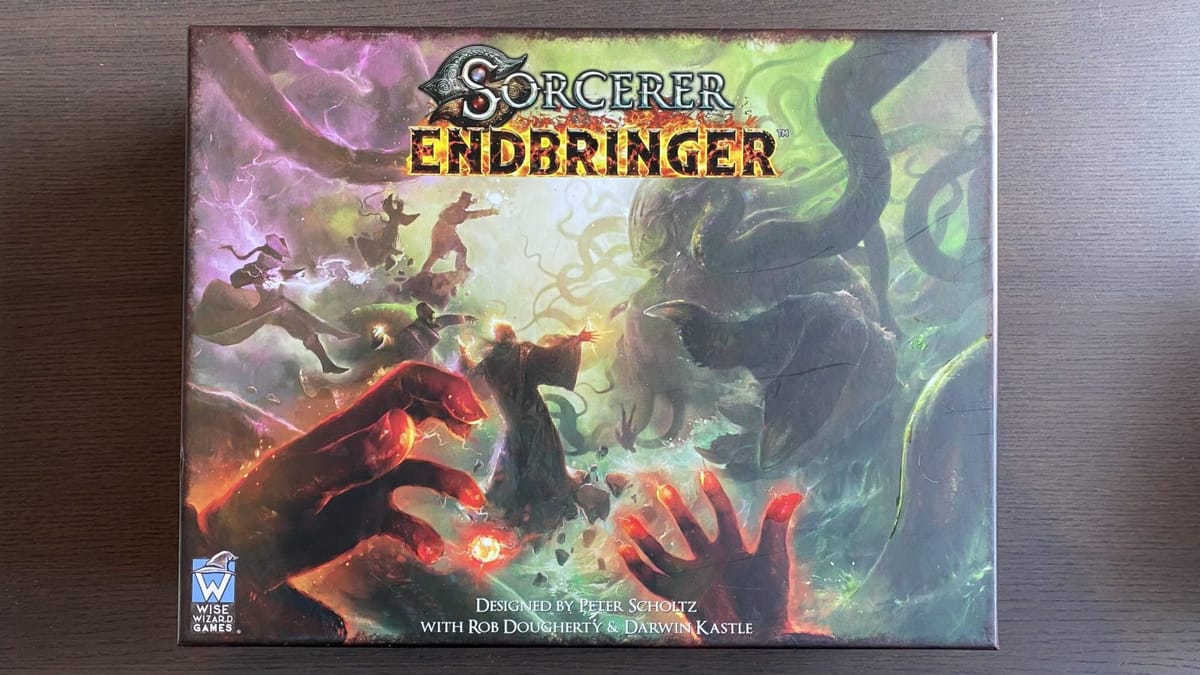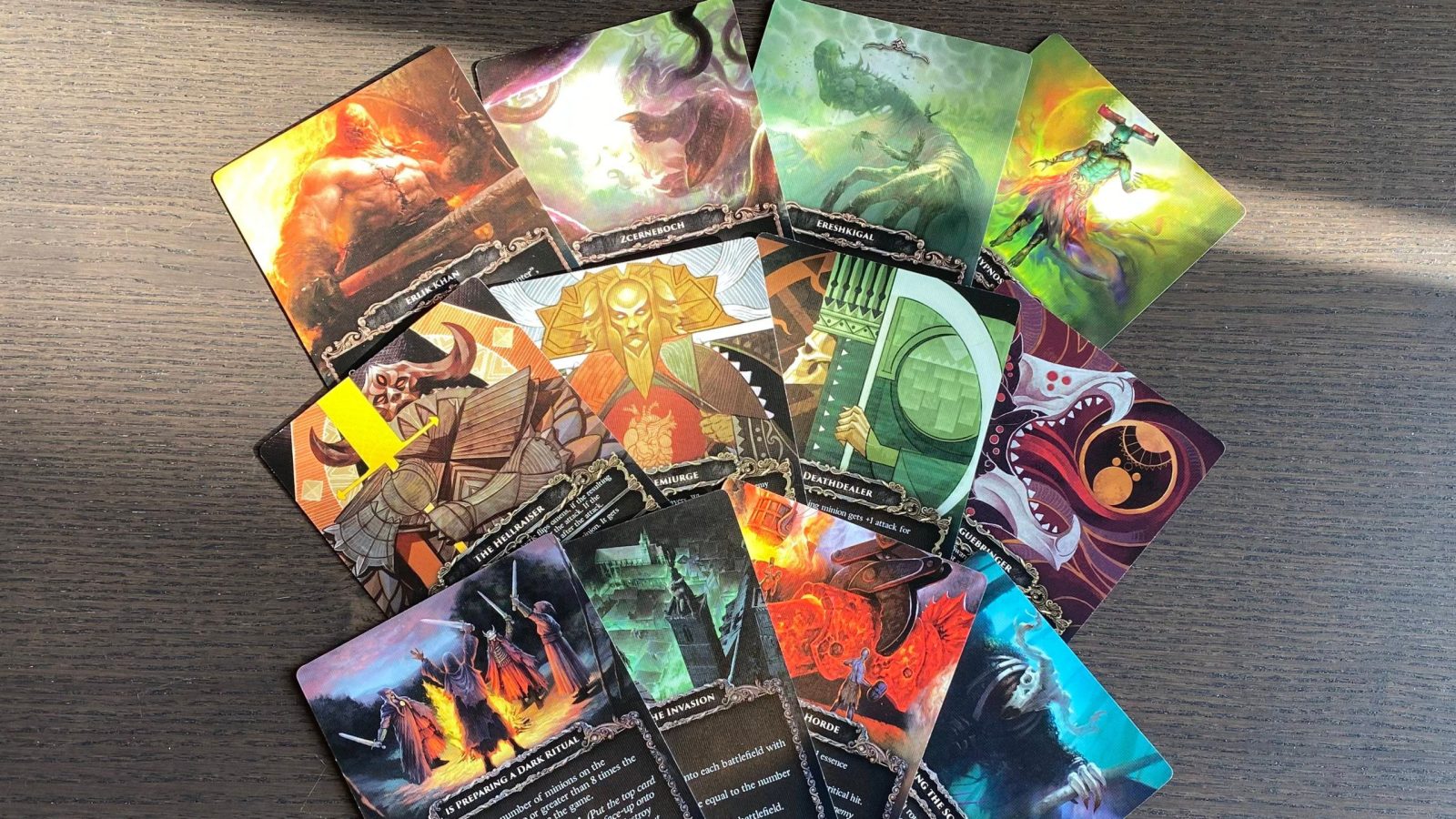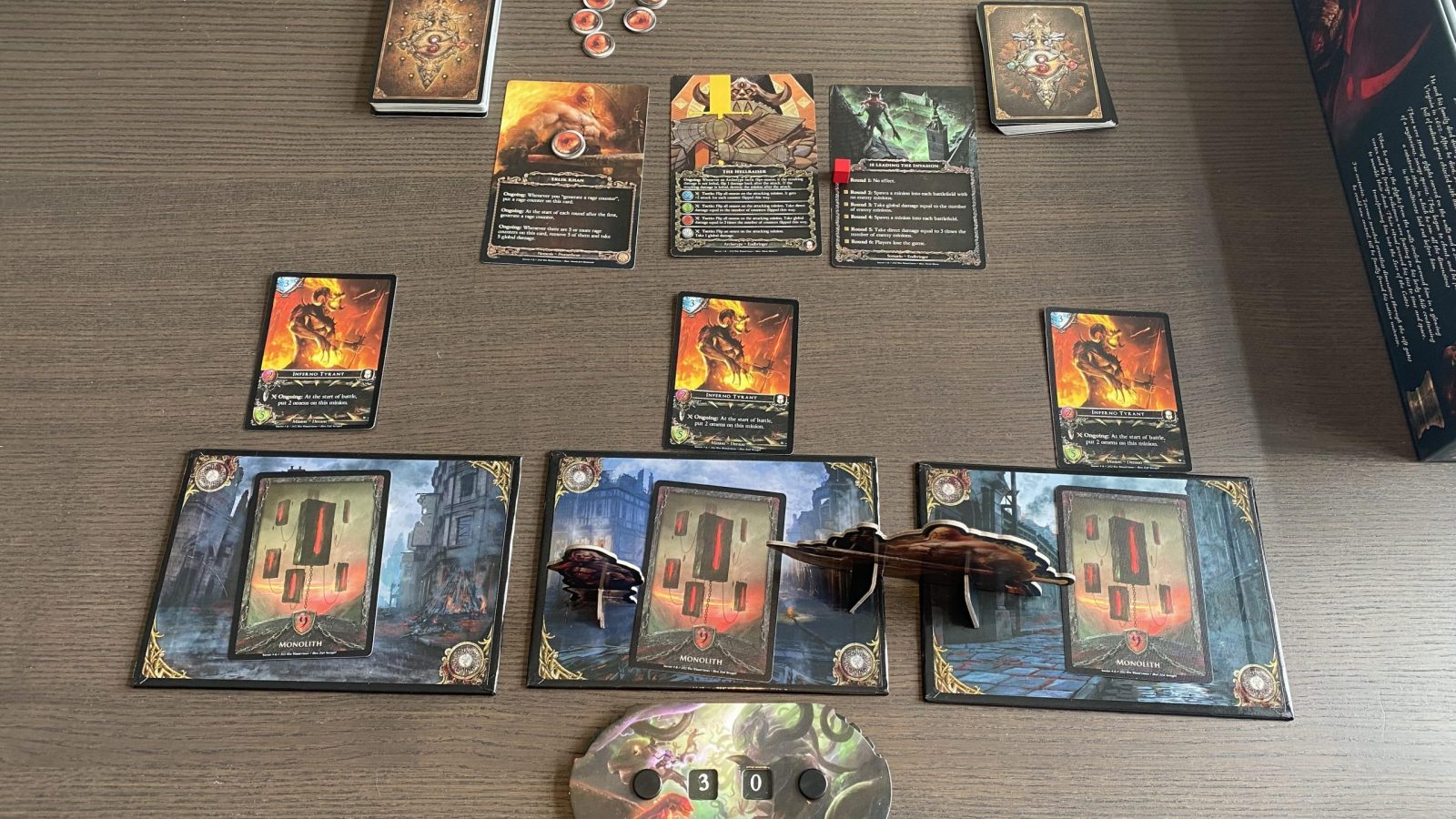
I really love Sorcerer. As someone that enjoys playing TCGs but hasn’t got a knack for deck construction, I’m frequently on the lookout for games that scratch the same itch without forcing me to invest both time and money on anything besides playing the game itself. Sorcerer is easily my favorite of the ones I’ve tried, so I was intrigued when they announced that Sorcerer: Endbringer would be a co-op experience against an AI. Mostly I was worried that the AI might be too cumbersome to be enjoyable or that it would have difficulty scaling with player count. Luckily, the designers handled both those issues gracefully.

Plenty of combinations to choose from
Just like the players’ Sorcerers, the AI Demigod is crafted with three different components during setup. The Nemesis, which has the AI’s action deck and unique effects, the Archetype, which has the AI’s deck of minions to summon and the equivalent of players’ Domain tactics, and optionally the Scenario, which has ongoing effects and an alternate win/loss condition. Each choice comes with a set of Monoliths that are all shuffled together and placed on each Battlefield. All the players have to do (barring any Scenario rules) is break the Monoliths.
The AI themselves are incredibly easy to run. Minions are spawned from the Archetype deck based on player count and after each player turn the top card of the Nemesis deck is resolved. There are rules for how the AI allocates damage dealt to them during the Battle step, though they don’t roll dice for their own minions’ attacks. More players means more Minions and Monoliths to deal with, along with more turns for the AI. There’s no extra overhead that the players need to run regardless of player count, nor do the Minions and Monoliths simply get more Attack/Essence as I’ve seen other games do.

Erlik Khan the Hellraiser is Leading the Invasion… and only my Necromancer can stop him
The Demigods are fun to fight as well. It still feels like I’m playing a regular game of Sorcerer, trying to manage multiple locations to keep them from being overwhelmed while balancing both enemy removal and winning the Battlefields. With all the possible combinations of Demigods, there’s plenty of variety to explore. I will most likely play with Endbringer just as much as the base game since it’s incredibly easy to add. Even some of the weirder interactions, such as discarding cards from an AI with no hand to discard from, are handled simply and still benefit the players. There were a few times that the AI’s action “whiffed” and had no effect on the game state, but those were infrequent enough.
Aside from the difficulty options in the rules, the Demigod you created at the start can have a devastating combination or a more lackluster one. The “is Preparing a Ritual” scenario destroys the Demigod’s Minions to fuel itself at the end of each round, which can hurt Nemeses and Archetypes that prefer minions that can get buffed. Similarly, players need to think carefully about their Sorcerers’ makeup. Having Omens available is necessary to deal with some of the tougher Ongoing Archetype cards. Regardless, there will be plenty of tense moments. When we played the “is Preparing a Ritual” scenario for the first time, it got down to the wire with only a single card left in the Archetype deck after the Ritual absorbed most of the Demigod’s Minions. We lost, but agreed that we would absolutely play again.

My Necromancer only drew Trolls and no Undead… things aren’t looking good for London
There are a few minor gripes I have with the expansion, or more specifically the components. Each part of the Demigod (Nemesis, Archetype, Scenario) has a card with their specific rules. These cards are double-sided, but they’re the same on both sides. I would have much rather seen their specific setup instructions on the back rather than flipping through the rulebook each time I play. In a similar vein, the round structure is altered slightly from the base game, but there’s no reference card for the new structure. A card that I could place atop the reference on the player boards would have been great, since I occasionally missed certain steps and had to go back or check the timing of things. This may be nitpicky, but these little things would have improved my experience a fair bit, if only because I don’t like opening a rulebook after I’ve learned a game.
Sorcerer: Endbringer
Great
Easily manageable and scalable AI for solo/cooperative play, keeps all the fun of the original game. Can take a bit of flipping through the rulebook at first but is fantastic once it clicks.
Pros
- High replayability
- AI is easy to run
- Still feels like Sorcerer
- Varied difficulty
Cons
- Wasted space on double-sided cards
- Lack of updated turn references
